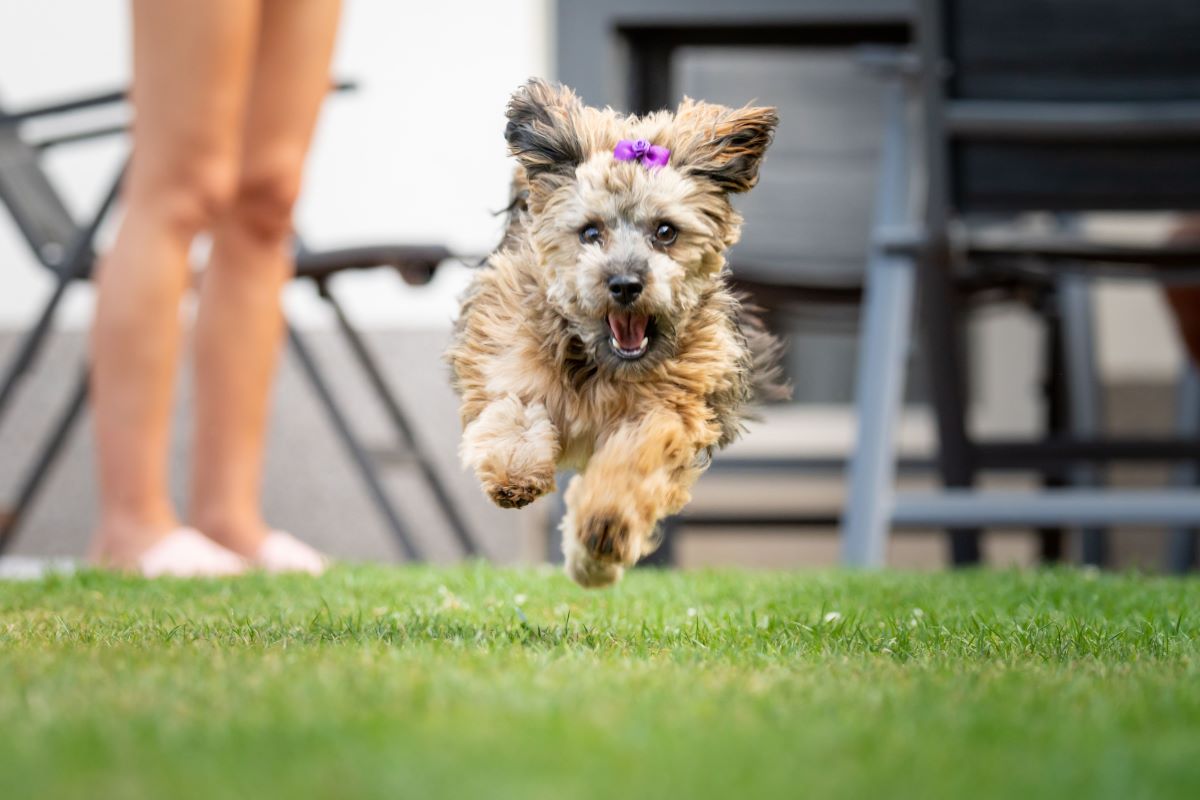Get Pet Insurance for your Cat & Dog

Zero
Documentation
Quick
Claim Process
Affordable
Premium
Terms and conditions apply*
- {{species}}
- {{indoorOutdoor}}
- {{suminsured}}
Havanese Dog Breed Characteristics & Information

Havanese dogs are small, with cute, round faces and long, straight or curly hair. They are brilliant, with a shallow prey drive, and are also known as Cuba's national dog.
Scroll down to read more about this breed's history, characteristics, training, and more.
What is the History of Havanese Dogs?
Havanese dogs originate from Havana, the capital of Cuba. Initially, they were only seen with the Cuban aristocrats and wealthy residents. This dog breed was believed to be brought to Cuba by the Spanish seafarers.
The ancestors of the Havanese dog are from the Bichon family, and the elite class of Cuba have further polished this breed. However, Havanese dogs came to the U.S. with the Cubans during the Cuban Revolution.
What are the Characteristics of Havanese Dogs?
Some characteristics of the Havanese dogs are:
- Lifespan: The Havanese dogs have a lifespan of 14 to 16 years, just like any other dog breed.
- Height: Irrespective of gender, Havanese dogs grow up to a size of 8 to 11 inches.
- Colour: Havanese dogs come in various colours, such as chocolate, fawn, gold, yellow, and grey.
- Weight: The male and female Havanese dogs have an average weight of 7 to 13 pounds.
- Temperament: Havanese dogs are generally happy and affectionate, making them perfect for kennels. They are also very attached to their owners.
- Energy Level: Havanese dogs are highly energetic and playful all day long.
How to Train Havanese Dogs?
Affectionate and family-loving Havanese dogs may show destructive behaviour if not trained properly. Hence, the following tips will help you to train your dog effectively:
- Start with the Basics: Your Havanese must gain confidence while training. Hence, start with the basic commands and behaviours before moving on to something too complex. Complex things will likely be frustrating and discouraging.
- Use Positive Reinforcements: Havanese dogs are very fond of rewards. Hence, treat your puppy as soon as he shows the desired behaviour. He will likely correlate the bonus with the desired behaviour and repeat it.
- Avoid Scolding or Punishing: Havanese dogs are more sensitive than other breeds. Hence, the trainer or the owner should be very calm when dealing with Havanese dogs. Sensitive species often get discouraged if scolded or punished during training.
What are the Common Health Problems in Havanese Dogs?
Some of the common health problems of the Havanese Dogs are:
- Heart Murmur: Heart murmurs are caused by any kind of disturbance in the blood flow. The grading of these heart murmurs depends on the audibility of the murmurs. Murmurs indicate other diseases in Havanese dogs that require proper treatment.
- Deafness: Deafness poses various challenges for the Havanese dogs and their owners. Deafness can be cured to some extent with medicines and surgery but cannot be treated completely. Patience and time is the key to dealing with such dogs.
- Portosystemic Shunt: In this, the blood circulation of the digestive tract bypasses the liver in Havanese dogs. This results in the circulation of toxins throughout the body that are typically eliminated by the liver. These toxins lead to several other diseases.
- Legg-Perthes Disease: Legg-Perthes disease is concerned with the hip joint ball deformity. Initially, the blood supply decreases to the femur bone, and gradually, the bone dies off and gets deformed. As a result, Havanese dogs suffer from arthritis.
- Hip Dysplasia: In Havanese dogs, hip dysplasia is a disease of the hip joints. The hip joints are weakened owing to abnormal development. Even after being a genetic disease, non-affected dog parents can also give birth to affected Havanese puppies.
- Chondrodysplasia: Chondrodysplasia is mainly related to the abnormal growth of bones, which results in very short limbs. The severity level ranges from standard to crippling. Dogs in this condition should not be bred further.
- Cataracts: Cataracts are generally seen in old Havanese dogs, where the eye lenses become opaque. This occurs due to the clumping of the eye proteins. Cataracts are a genetic disease and can be treated with surgery.
How to Take Care of Havanese Dogs?
Here are some of the tips to take care of your Havanese dog:
- Food: The quantity of dry dog food Havanese dogs should be fed depends on their weight and activity level. However, the general recommendation is to provide them with one to half a cup daily, divided into two to three meals.
- Alone Time: Havanese dogs become attached to their owners. They were mainly bred as companions and valued family time above all else. Although you can keep your Havanese dogs alone for up to 5 hours, extended periods may trigger their separation anxiety. So, plan training for alone time in increments for success.
- Grooming: Despite having a long, shiny coat, Havanese dogs are non-shedders. Regular grooming is essential for preventing tangles and matting. Corded hairs must be shaved off if not wanted after some time. Havanese dogs are comfortable with long coats as they protect them from heat and cold.
- Endurance: Although Havanese dogs are pretty small, they have a fantastic endurance level. They are highly playful and love spending time with humans. Owing to their heat tolerance, they can also be taken along while running and hiking. Their regular exercise requirements can also be fulfilled by playing or walking for 20 to 30 minutes.
The Havanese dog breed is highly affectionate and quickly interacts with children and other pets. However, their small size makes them prone to injury. Hence, it is crucial to be careful around them, and children should be taught how to behave with them.












